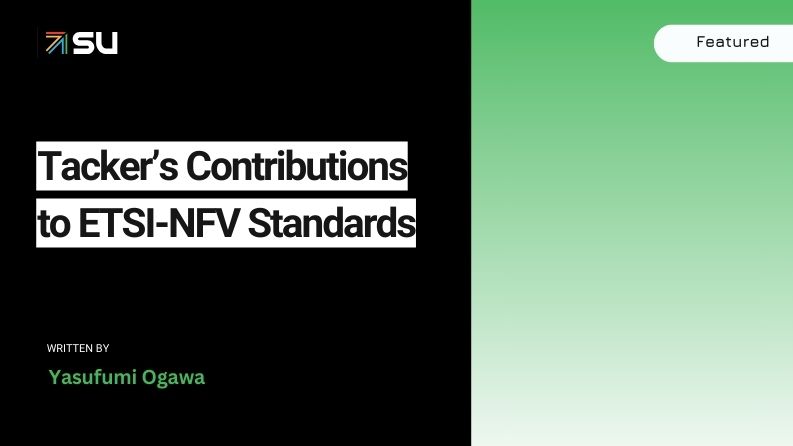This article outlines how OpenStack Tacker has contributed to O-RAN SC for realizing a reference implementation of vRAN based service systems.
Why O-RAN SC?
Tacker project has been implementing Generic VNF Manager (VNFM) and NFV Orchestrator (NFVO) defined in ETSI-NFV standards for managing network service components, and it’s positioned as Service Management Orchestration Framework on the architecture.
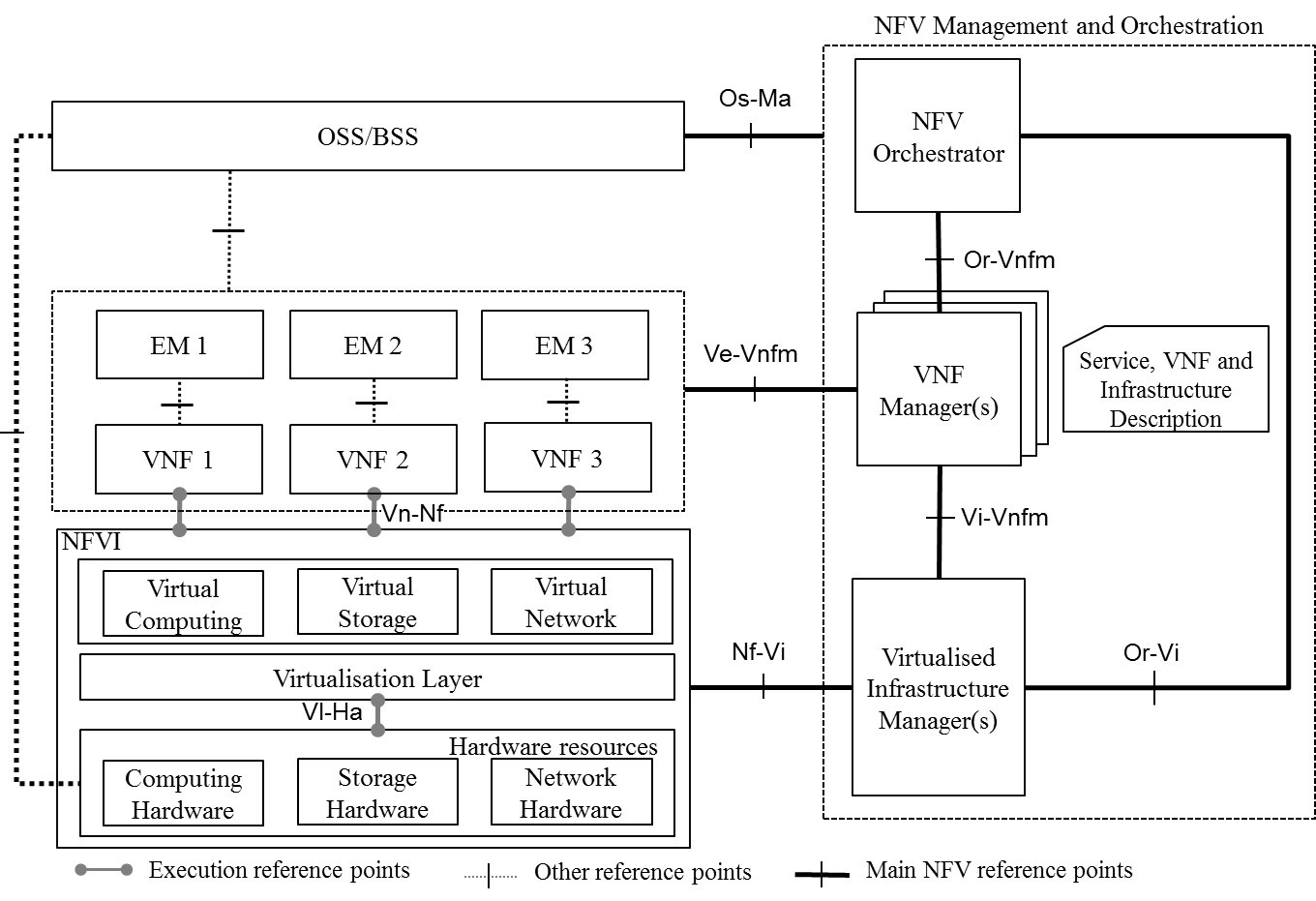
The Open Radio Access Network Software Community (O-RAN SC) is a collaboration between the O-RAN ALLIANCE and Linux Foundation with the mission to support the creation of open software for the RAN.
In terms of 5GC, vRAN is one of the key technologies which consists of so many components and requires real-time processing. From stand point of view of Tacker, our main concern is how manage the components with Tacker’s features of high-availability such as auto scaling/healing or fault management for VNF/CNF lifecycle management.
Our main goal is for O-RAN SC is providing a SMO functions communicate with other components via standard APIs on O-RAN architecture. SMO is for managing O-Cloud at the bottom of the architecture diagram via an interface called as O2.
In the O-RAN architecture, the radio side includes Near-RT RIC and other processing units such as O-RAN Central Unit (O-CU), O-RAN Distributed Unit (O-DU) and O-RAN Radio Unit (O-RU). Near-RT RIC is for O-RAN near-real-time RAN Intelligent Controller and is a logical function that enables near-real-time control and optimization of O-RAN elements and resources via fine-grained data collection and actions over E2 interface.
On the other hand, management side includes Service Management and Orchestration (SMO) Framework that contains a Non-RT-RIC function. Non-RT RIC is O-RAN non-real-time RAN Intelligent Controller and is a logical function that enables non-real-time control and optimization of RAN elements and resources, AI/ML workflow including model training and updates, and policy-based guidance of applications/features in near-RT RIC.
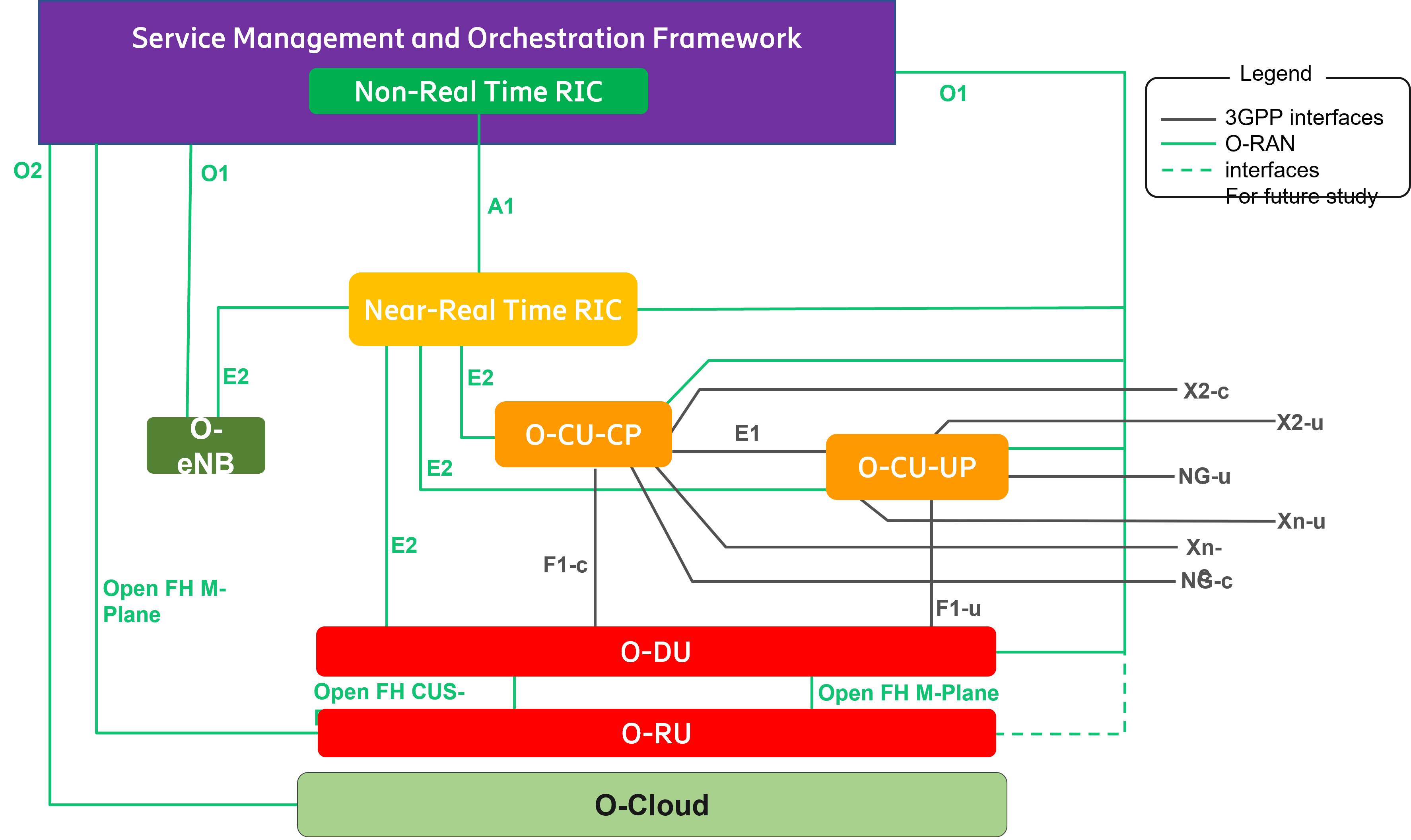
Contributions for O-RAN SC
With an agreement between OpenStack and O-RAN SC communities, Tacker team joined to ORAN-SC from its mid of F-release
(O-RAN SC has alphabetical release names as similar to OpenStack) and has been contributing to develop around SMO.
We have provided Tacker’s codes to be integrated into O-RAN SC code set as ETSI NFV based VNFM. In the architecture, Tacker manages Network Function Deployment as a part of Deployment Management Service (DMS) via o2dms interface referred as SOL003 or SOL014 in ETSI NFV standards. It also supports SOL001 VNF Descriptor (VNFD) for VMs and Kubernetes Manifest for containers.
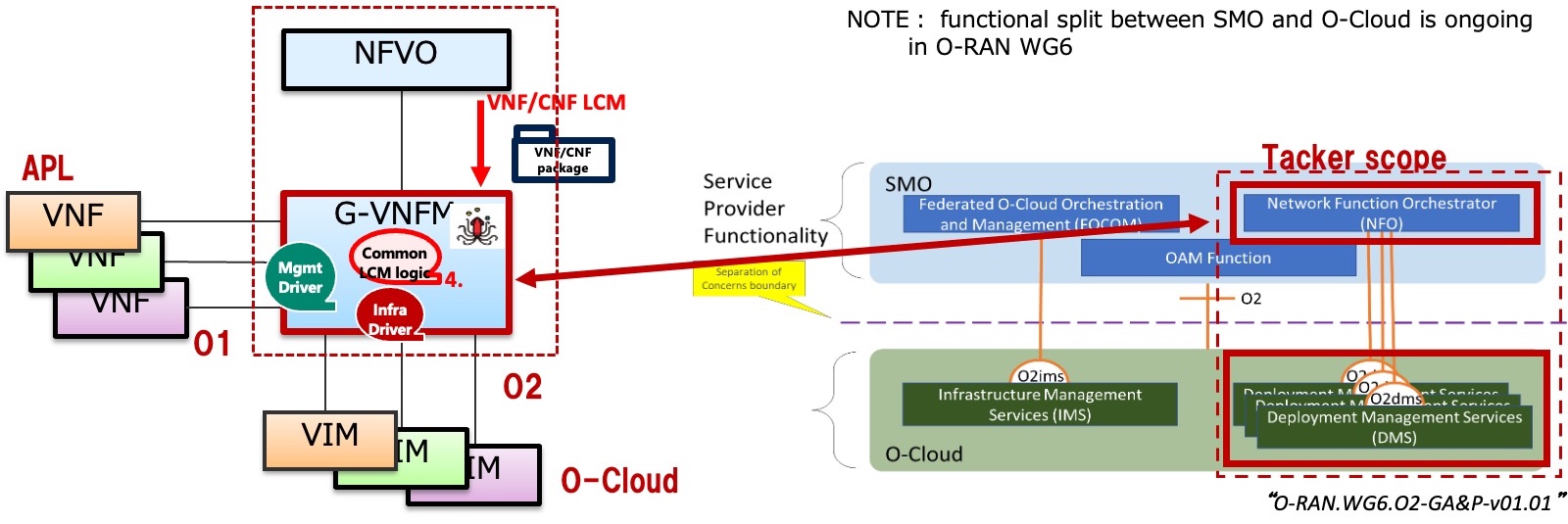
Through from F-release to H-release, our team has integrated Tacker into SMO O2. In F-release, we targeted towards implementation of the O2 interface itself and getting an initial implementation in place. Then in G-release, there were O2 interface for VM-base VNF and testing with NFV API compliant test code so called as TST010 in ETSI NFV targetted. For H-release, we introduced Automation Framework for integrating NONRTRIC, OAM and Tacker’s Life-Cycle Management (LCM), onboarding and FM.
Our interest is not only on design but also on providing a demo in which Tacker based SMO is work with some open soruce softwares. So, we have been developing a PoC demo with StarlingX which is positioned as a part of O-Cloud.
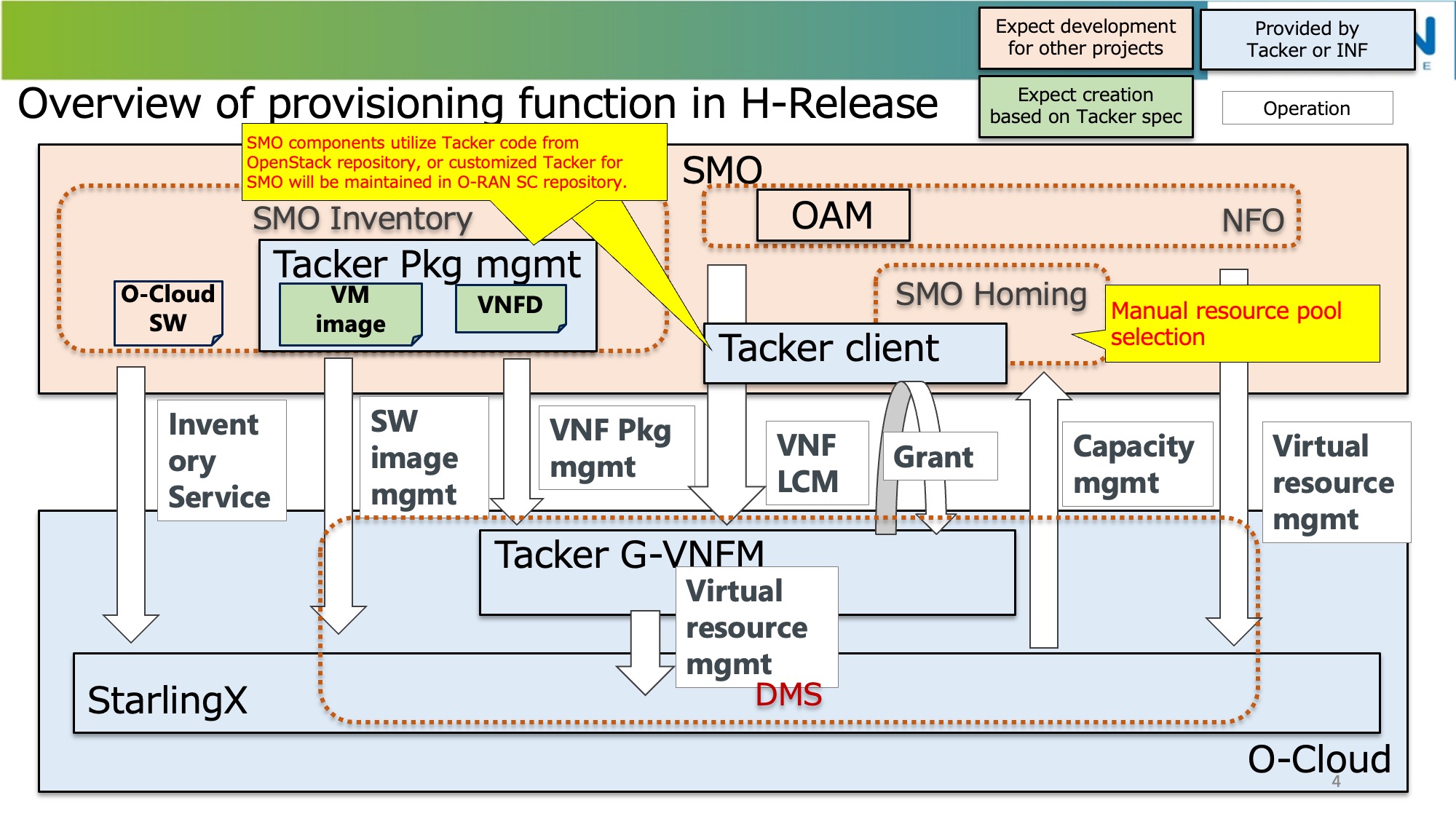
The O-RAN compliant O2 Interfaces feature in StarlingX is designed to support the O-RAN standard and enable telecom providers to easily integrate their 5G network functions into a cloud infrastructure. StarlingX’s O-RAN specification compliant O2 interfaces feature is built on top of the O2 Service in G release of Open RAN Software Community (ORAN-SC) INF project.
As described in the overview above, Tacker triggers operations such as registering software images or
monitoring resources on O-Cloud of StarlingX for autonomous deployment via O2 interfaces.
Future roadmap of SMO and O2dms
In ETSI NFV specification, there are several types of VNFs and its priority or requirements of management and orchestration are different. Tacker has been developed for supporting such a VNF types for usecases step by step. For example, granting is a negotiation mechanism with other function for orchestartion, indicator is for VNF provides alarm or further action, or snapshot takes a backup of VNF.
Tacker is supporting the feature one by one to manage additional type of VNFs. In terms of development roadmap, RADIO Network is the next target for which we don’t have any VNF appropriate for OAM expected to be applied to highly distributed and small data centers.
There are several discussion items for SMO and O-Cloud for the next releases in the community. For SMO, we have discussed for implementing automation framework triggering instantiation or heal of components including NONRTRIC with Tacker’s LCM operation defined in SOL002. VNF Package for supporting vDU with accelerator is also an item for the future development.
O2dms FM/PM in O-RAN is also still ongoing and we propose to realize SOL002-based VNF FM/PM by using Tacker as implementation. Tacker can support VNF FM/PM by using external monitoring tool. Prometheus is the most popular tool as the external tool and going to be deployed with O-RAN as in our plan.
We will make contributions to both of communities, OpenStack for realizing ETSI-NFV compliant VNFM and O-RAN SC for developing vRAN specific use cases and VNF implementations.

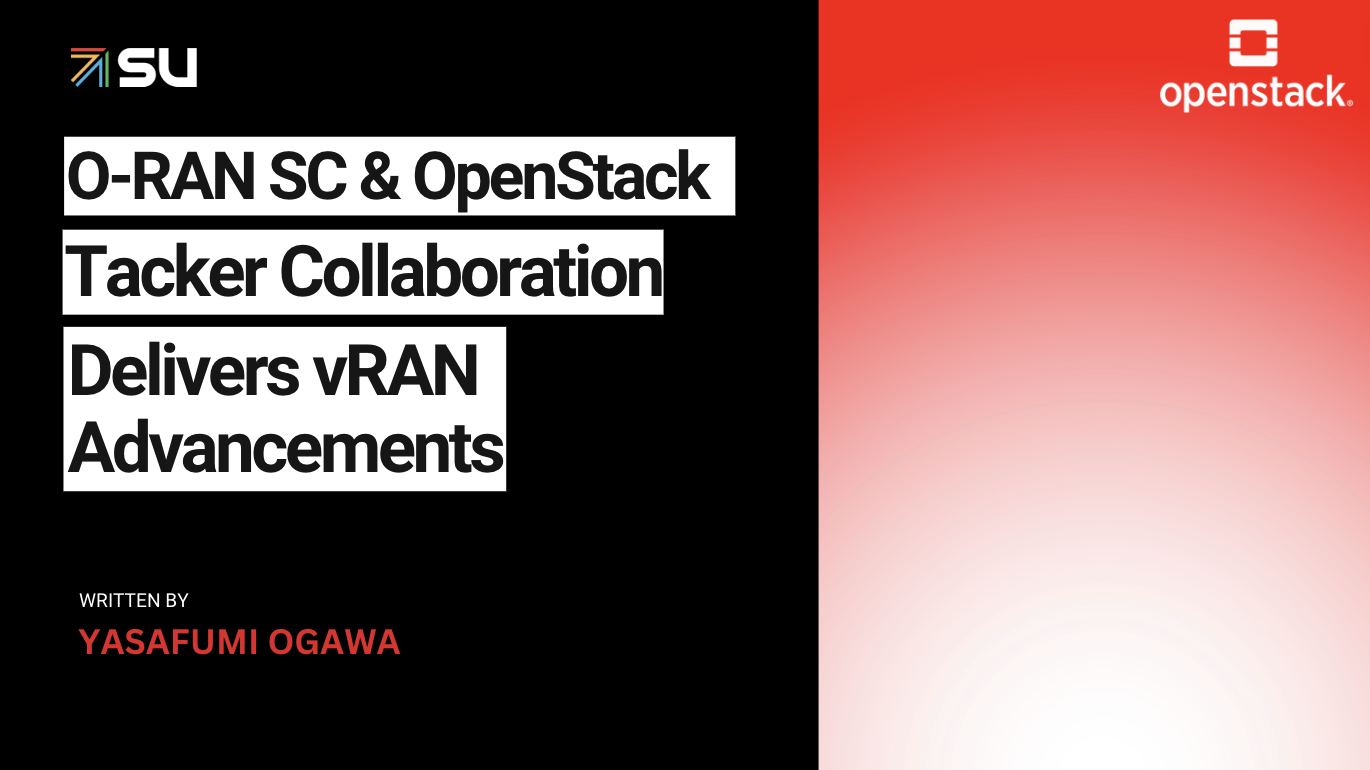)




